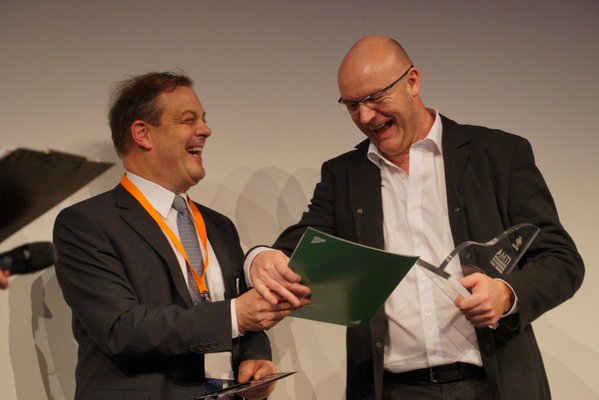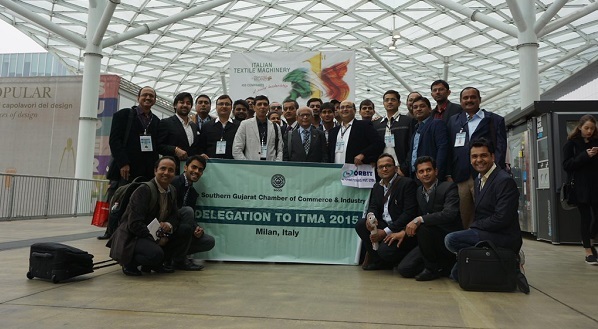FW
Periodic fluctuations in the prices of cotton have often been a problem for hosiery manufacturers. These fluctuations have upset the cost and profit margin calculations for various end products.
Hosiery manufacturers want cotton exports to be regulated so that domestic garment manufacturers get adequate stock. They suggest that exports of cotton should be allowed only at the rate of five lakh bales a month and exporters should be allowed to procure the prescribed quantity for exports only at designated months fixed in advance.
Manufacturers also want the union government to fix prices for various grades of cotton as soon as possible. South Indian hosiery manufacturers feel cotton produced should be ginned and sold directly by the Cotton Corporation of India at prices fixed by the government.
Hosiery makers feel restrictions on cotton exports would facilitate enhanced availability of cotton for domestic consumption and also help in checking yarn and cotton prices. Driven by depreciation in the value of the rupee against the dollar, there was a steep rise in cotton exports from the country, which led to a sharp rise in cotton prices in India’s domestic market.
The hosiery industry has been further burdened by the imposition of an anti-dumping duty on imports of polyester yarns from China or Thailand.
Bangladeshi denim makers should bring in diversity to their products as the items have bright prospects because of their competitive prices and quality, say various experts. Wanja Campos da Nóbrega, Brazilian ambassador to Bangladesh opines that the country should not only increase the number of international buyers, but also bring variety to its products range. At the closing ceremony of the two-day Bangladesh Denim Expo at Bashundhara Convention City in Dhaka, he stated that exports of Bangladesh's denim products will grow further with more variety in products.
Russian ambassador, Alexander A Nikolaev, urged the organisers of the denim show to invite Russian denim companies to the expo in 2016, as Russia could also be a major market for such Bangladeshi products. The demand for denim products is on the rise because they are environment-friendly, opined Hanne Fugl Eskjaer, Danish ambassador in Dhaka. While Robert Gibson, the British High Commissioner believes that new technologies and increasing fabric diversity are the challenges to maintaining steady growth of Bangladesh's denim exports. He also said that investing in skills improvement would increase productivity and the private sector has to lead the effort and that the government will also have to play a very vital role in taking the denim sector ahead.
Faruque Hassan, Vice-President, Bangladesh Garment Manufacturers and Exporters Association (BGMEA), said that at present Bangladesh exports denim products worth $3.5 billion a year, and stakeholders are working to double that number by the end of 2021.
A first-of-its-kind, innovative and sustainable textile fabric processing machine to process diverse kinds of fabrics, whether mercerising, bleaching, desizing or washing has been launched by India’s Geratex Machinery at ITMA 2015. The Geratex fabric washer offers higher efficiency in terms of space, energy usage and chemicals and water consumption by using ultra-sonic technology on industrial size washing machines. This technology can even be retro-fitted into existing fabric processing machines to achieve comprehensive savings.
The major benefits of the technology are that it helps reduce around 20-30 percent of chemicals, achieves 25-35 percent in water savings, delivers 30-35 percent in energy savings, and its compact size helps save space up to 60 percent. Although, the technology is new, the cost of installing it would be less by 40 percent when compared with conventional fabric washers. Also, as the cost of the new technology is lower, it requires smaller related ancillaries such as boilers, electrical power, etc., and finally uses very less space.
Indian textile manufacturers hope to be at par with Europe in terms of quality in 10 years’ time. The ‘Make in India’ initiative is the start of a long term plan to improve the quality of Indian textiles by acquiring knowledge and technologies and skills from other countries. In return, the plan hopes to offer businesses the convenience of a single entry point for the entire market, customised working environments for individual businesses and a huge market.
India has a population of 1.2 billion people, so it’s a huge market for Europe. India can offer European businesses improved infrastructure, policies, strategies and connectivity, as well as an environment conducive to their interests. The quality of textiles produced in India at the moment is not quite up to European standards, but production is between 10 per cent and 20 per cent cheaper.
There are a lot of Indian companies at this year’s ITMA because they are all pushing for more joint ventures with other countries. They are intent on building up their business overseas. The plan is to improve the country’s brand name little by little while striving to keep costs down, so that in 10 years Indian manufacturers will be able to compete with Europe in terms of quality and cost.
As the Pakistan government has promised help boost production and exports at reduced prices, the country’s textile industry has suspended its several month long agitation for solid business demands.
Three out of the eight demands of the industry have been accepted by the government. However, the industry while welcoming this gesture announced that it will continue to agitate for the acceptance of the rest of the demands. The three accepted demands are: raising the regulatory customs duty on import of Indian cotton yarn and fabric-coarse cloth from the present five per cent to 25 percent. The government though, raised it only to 10 percent, effective from November 1. The second demand is provision of more and cheaper, long-term finance for the ginning and spinning sector, and the third demand is reduction in long-term financing and export financing (ERF) by one percent.
All Pakistan Textile Manufacturers Association (APTMA), the industry leader, stated that the textile industry is hopeful that the rest of the eight demands will soon be considered favourably and resolved by the government for the viability of the industry and increasing exports of the country.
Pro-business policies by the Prime Minister Nawaz Sharif and a team of his three negotiators conceded some of the demands. Ishaq Dar, Finance Minister said that they need more revenues and would have to enlarge their forex earnings rapidly to expand nationwide development work and repay foreign loans. However, the government has chosen to help the textile industry as it is the biggest labour employer and foreign exchange earner through exports, he added.
A mega textile cluster is coming up at Mysore. The project will receive Rs 50 crores by way of a central grant and an additional 25 acres of land is being identified for expansion of the cluster. Work on the textile cluster is expected to begin soon after the ground breaking ceremony to be held later this month. Once launched, it would be among the first of the five industry-specific clusters sanctioned for Mysore.
Being a labor-intensive industry, the textile cluster is expected to help generate additional employment in the region, besides fuelling the local economy by spawning ancillary industries to support the cluster. The area is known for cotton, the bulk of which is supplied to textile units in Tamil Nadu. Once the textile cluster takes shape, local farmers will have a market closer home which will be beneficial to them as it will obviate the need for transportation.
The mega textile cluster is expected to give a boost to the Make in India campaign. About Rs 30 crores has been earmarked as initial investment. A Special Purpose Vehicle will be registered under the Companies Act for its implementation and funding.
Mysore and its surrounding regions are known for sericulture and the famed Mysore silk has been accorded the geographic indication tag in view of its uniqueness.
A two-minute silence was observed at the NSC booth in memory of the victims of Paris terror attacjs. The biggest development at ITMA 2015 was the coming of age of digital printing. This sector has its own chapter at the exhibition for the first time. The show’s theme, ‘Master the Art of Sustainability’ is in alignment with digital printing. It offers huge benefits in terms of vast reductions in the use of raw materials, water and energy.
In digital textile printing worldwide, until today, applications for industrial soft signage have been responsible for much of the growth. However, it is still comparatively small, despite growth rates of around 25 per cent annually, representing around just 1.5 per cent of the overall textile printing market.
Akiyoshi Ohno, Senior Advisor and ex-President of NSC, outlined the rapid development of his company’s digital systems and explained why the latest single pass machines now make sound business sense. Ohno was speaking at the Konica Minolta Inkjet’s press conference.
Italy’s value and influence are considerably higher even though it now represents only about three percent of the world’s printed textiles by volume. Giovanni Sommariva, a noted industry consultant said digital printing is among the key technologies that have been responsible for a revolution in making the most up-to-the-minute Italian fashions available to the world. The full textile production chain has been totally modified to provide flexibility and just in time supply, including RFID and bar-code tracking, inspection and packaging systems for complete traceability. Inkjet printing provides just in time production, low energy consumption, waste reduction and easy operation.
Pakistan will import more cotton this season after losing about four million bales of the fiber to rains, pest attacks, and bad farm inputs. The country will take a loss of Rs 120 billion worth of cotton in the current season after the government revised down the production target by another two million bales.
Losses would multiple if byproducts (banola oil seeds and cotton cake) and value added textile products are included. This season, the industry expects the country to import at least 2.5 million bales after the government revised the production target twice. In the first five months cotton production fell almost 23 per cent. Local consumption is estimated to be around 15 million bales this season. Last year the country had imported around one million bales to meet the demand of the local textile industry.
Heavy rains in April and May 2015 damaged cotton crops in key production areas of Punjab province. Aggressive use of pesticides to counter pest attacks on the crops still in the fields also damaged fiber. The average production from an acre of land has declined drastically in the current season.
Floods also damaged crops over an estimated area of 1,00,000 acres. The worst affected areas from rains were Multan, Lodhran, Vehari, Khanewal, Pakpattan, Sahiwal, Layyah, and Rahim.
US imports of denim apparel including jeans fell by just 0.3 per cent from January to September 2015 compared to the same period last year. This indicates the total demand for denim jeans and apparel is almost the same with a marginal fall. However, the total demand for denim apparel in the US still lags behind that of 2013 figures by a good margin. Against total imports of denim apparel of about 522 million pieces in 2013, the country is struggling to even reach a figure of 500 million pieces in imports.
In 2014, imports were stuck at 479 million pieces and are likely to be of a similar quantity this year, probably with a slight fall as seen in the figures of 2015 till September. The US market is more or less a saturated market and fashion, styles, market shares of brands, prices etc are the main parameters witnessing changes. Quantities and average consumption have reached a ceiling which was defined in 2005.
However, women’s jeans seem not to be losing their sheen as imports and hence sales are witnessing a growth for this segment. Imports of women’s jeans increased by about 2.2 per cent in the year 2015 and at the same time men’s jeans imports fell by about two per cent creating a net balance on import figures.

ITMA 2015 has achieved a new milestone, attracting the biggest number of exhibitors since the show's launch way back in 1951. The 17th edition of ITMA has 1,691 exhibitors from 46 countries showcasing their innovations at the event. The previous record was set by ITMA 2007 when 1,451 exhibitors from 38 countries took part in the exhibition.
ITMA, the world’s foremost trade fair dedicated to textile machinery is also once again marked by a significant presence of Italian companies, both in their numbers and in the quality of their technology.
Italian exhibitors occupy 30 per cent space

For eight days,visitors at ITMA , the world’s foremost textile machinery event will have an opportunity to appreciate the high level of technology being displayed by the 454 Italian machinery manufacturers exhibiting at the fair. The overall exhibition space occupied by Italian machinery manufacturers is nearly 32,000 sq. mt. (30 per cent of the total available surface area), confirming Italy’s leadership position among exhibiting countries.
“We’re just proud to have brought back to Milan the world’s major textile machinery fair after twenty years,” said Raffaella Carabelli, President of ACIMIT (the Association of Italian Textile Machinery Manufacturers), adding, “These numbers not only rank Italy first among exhibiting countries, but are a true testament to the vitality of our sector, and confirm the good state of health of the Italian textile industry.”
ITMA 2015 also features a larger exhibition, with net exhibit space of over 108,000m2, occupying 11 halls of the Fiera Milano Rho fairgrounds. It is about 20 per cent larger than the 2011 exhibition. As in previous years, exhibitors from CEMATEX countries occupy the largest space. They booked 69 per cent of the total net exhibit space - an 18 per cent increase over the 2011 figure.
Followed by Italy, exhibitors from Germany, Switzerland, and Spain are present in large numbers. From non-CEMATEX countries, the four largest groups of participants are from Turkey, China, India, and Japan. The countries fielding the largest contingent of exhibitors at ITMA 2015 are Italy (453 exhibitors), Germany (238 exhibitors), China (184 exhibitors) and India (158 exhibitors).
Sustainability in focus
The Milan edition of ITMA is a litmus test for assessing the commitment of the global textile machinery sector to a truly sustainable textile and garments industry, as the event’s slogan states: ‘Master the Art of Sustainable Innovation’. For some time now, Italian machinery manufacturers have been focusing on the issue of sustainability for their products, in order to satisfy the demand for efficient technology solutions that effectively cut back on consumption, and consequently on production costs.
The World Textile Summit gave more than 150 textile industry leaders a range of expert insights into the business issues that feed into decisions on sustainability in the textile supply chain. Co-located with ITMA 2015, the Summit had a program designed to examine how investment in ‘clean’ manufacturing or the use of sustainably sourced materials can help add value to companies at all levels of the supply chain. The subject of sustainability aligned with the overarching theme of ITMA 2015, which continues at the Fiera Milano Rho, in Milan, Italy, until November 19, 2015.
Among the efforts is the launch of the ITMA Sustainable Innovation Award, the rebranding of the ‘Research and Education’ pavilion to ‘Research and Innovation’ pavilion, and many knowledge-sharing platforms to drive home the sustainability message. CEMATEX continues to support research and educational institutes with a grant for the participation in the ‘Research and Innovation’ pavilion. The pavilion has 40 participating institutions. Taking centre-stage at the pavilion is the ‘Speakers Platform’ which will be held till November 17, 2015. A total of 43 papers on the theme of sustainable innovations, achievements in innovation and technical textiles applications, will be presented at the platform.
The ‘ITMA Sustainable Innovation Award’ is a new initiative by CEMATEX to honour those who have made pioneering efforts to promote industry sustainability. Three of the finalists were vying for the ‘ITMA Industry Excellence Award’ while another three for the ‘ITMA Research and Innovation (R&I) Excellence Award’, which were announced at the ITMA gala dinner. Tonello and Levi Strauss were declared winners of the first ITMA Sustainable Innovation Award for NoStone denim finishing technology.
Innovative machineries under 19 chapters
The event is featuring exhibits clustered into 19 chapters such as spinning, web formation, winding and texturing, weaving, knitting and hosiery, embroidery and braiding, finishing, dyestuffs and chemicals, software, logistics, plant operations, recycling and education to garment making and textile processing, printing, and fibre and yarn.
The top five sectors include dyeing and finishing occupying 23 per cent of the space, with 303 exhibitors, spinning, 14 per cent of the space with 290 exhibitors, weaving, 12 per cent of the space and 179 exhibitors, knitting and hosiery with 13 per cent of the space and 128 exhibitors and printing segment occupying 10 per cent of the space with 113 exhibitors.
www.acimit.it www.itma.com












